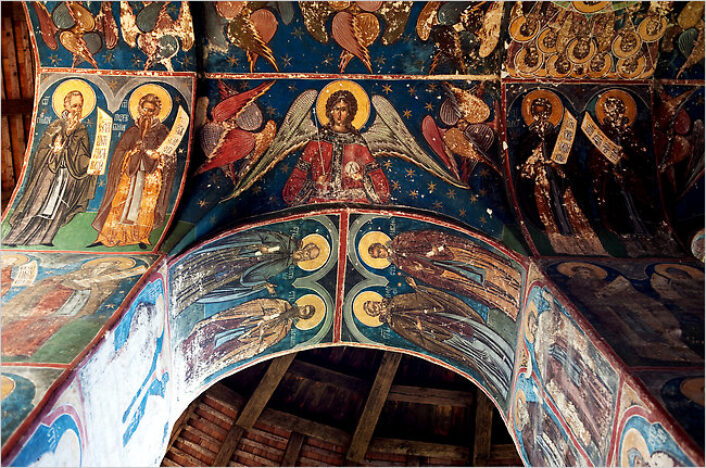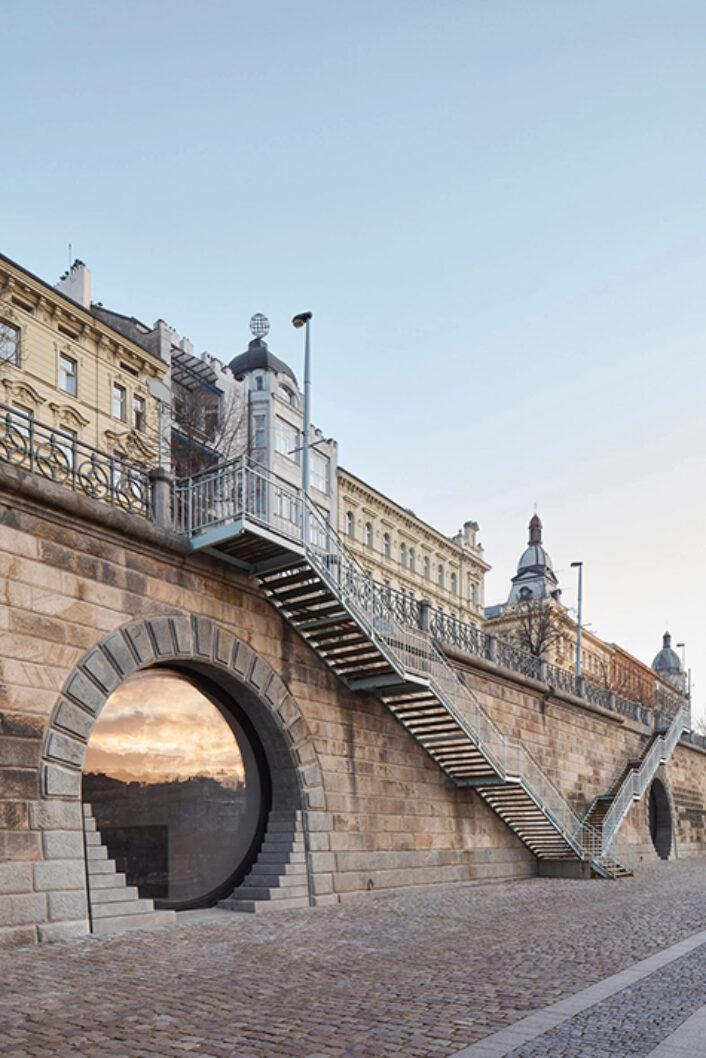Culture
Ukraine’s cultural treasures in danger
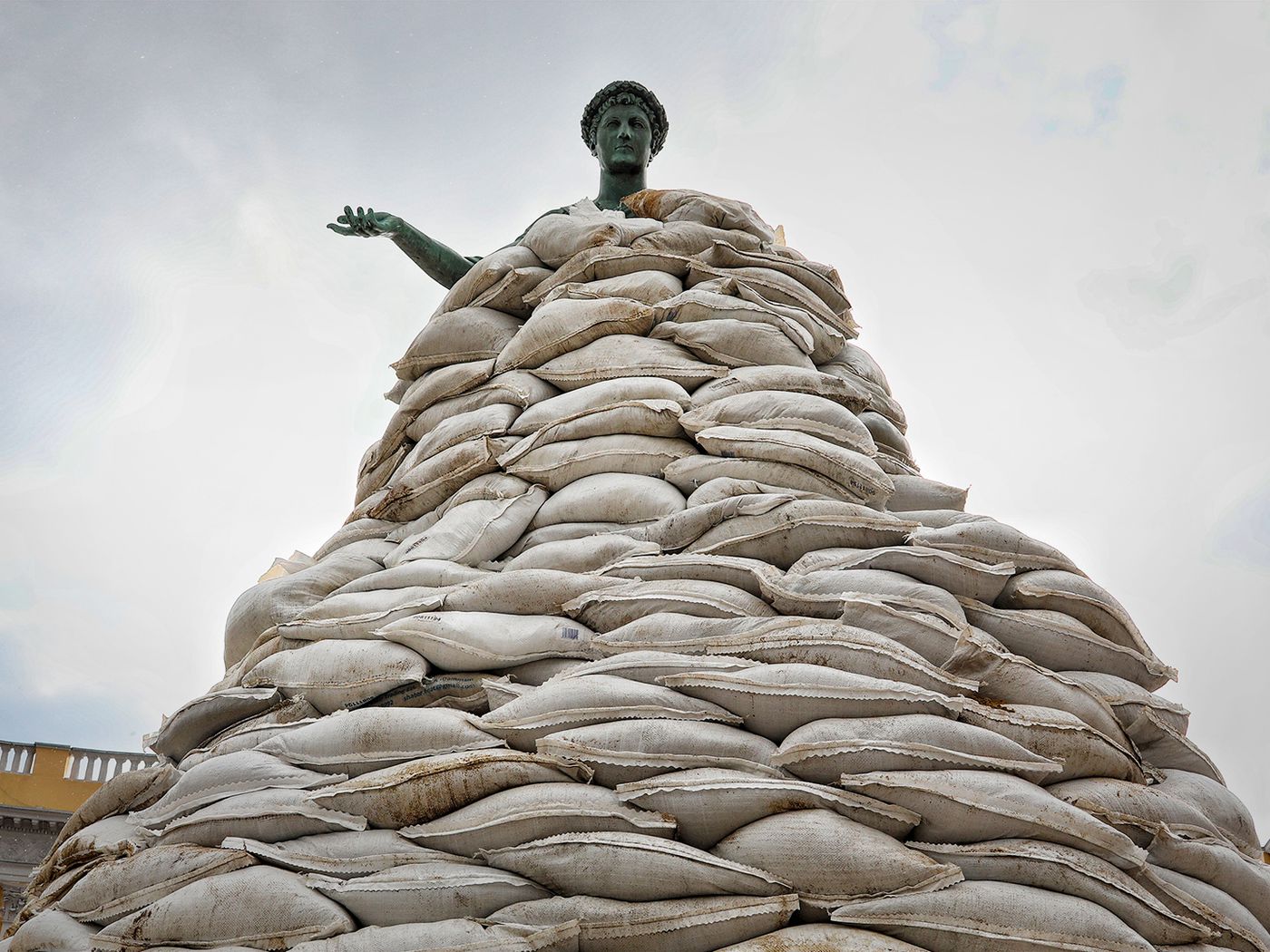
Sandbags encase a statue.
Image courtesy of: Vox
Art and history lovers from around the world have been worried about Ukraine’s priceless treasures as Russia continues to target the country and some of the most important landmarks that reside within the country’s borders. For months now, there has been concern that some of Ukraine’s most powerful symbols are in jeopardy of annihilation.
It is obvious that Russia is not just attacking Ukraine’s territory, there is also a very visible attack on Ukrainian culture and its art and history. According to Ihor Poshyvailo (as told to Matt Galloway on “The Current”), “Only since regaining our independence in 1991, we started to rediscover our history, regaining our cultural identity. We just started to feel ourselves as Ukrainians. That is why it is important to preserve all our cultural heritage … as the basis for us, as one nation, as one people.”
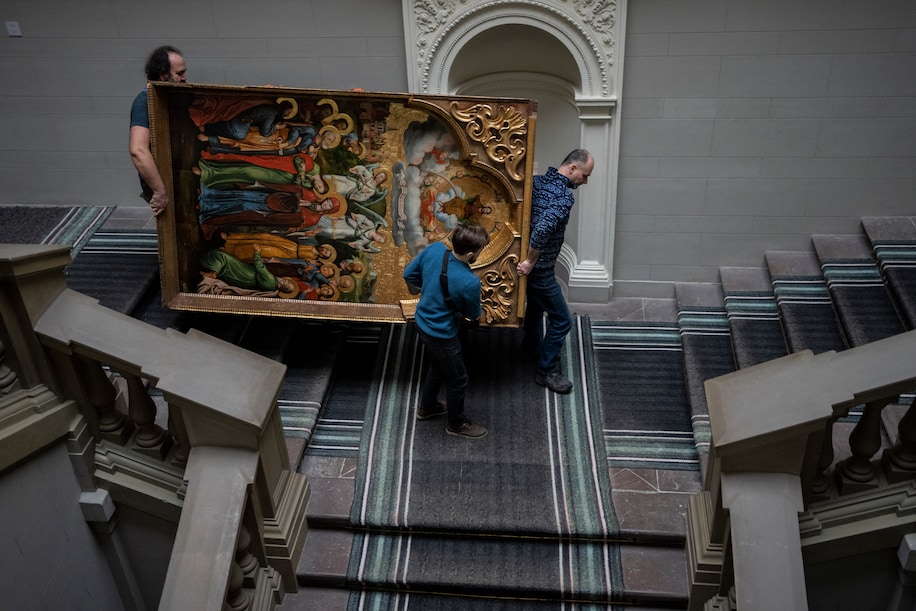
At the Andrey Sheptytsky National Museum in Lviv, workers move the Assumption of the Virgin of the Bohorodchany Iconostasis.
Image courtesy of: The Washington Post, photographed by: Bernat Armangue
It has been deemed a war crime to target cultural heritage; however such sites are often targeted as secondary fronts. These are ways for aggressors to assert power and demoralize the opposition. It is clear that this has been Vladimir Putin’s goal. Perhaps the thought is that if Ukraine’s cultural and historical markers are erased, the country’s morale will deflate.
UNESCO has been vocal at calling for a joint effort to save Ukraine’s priceless artifacts and monuments. Volunteers have mobilized to pack away and move ancient pieces among which are ancient manuscripts, paintings, and a 1,000-year-old Bible that is adorned with gold thread. Unfortunately, without special packing materials, volunteers are forced to use wooden crates and cardboard boxes from supermarkets to save these valuable pieces.
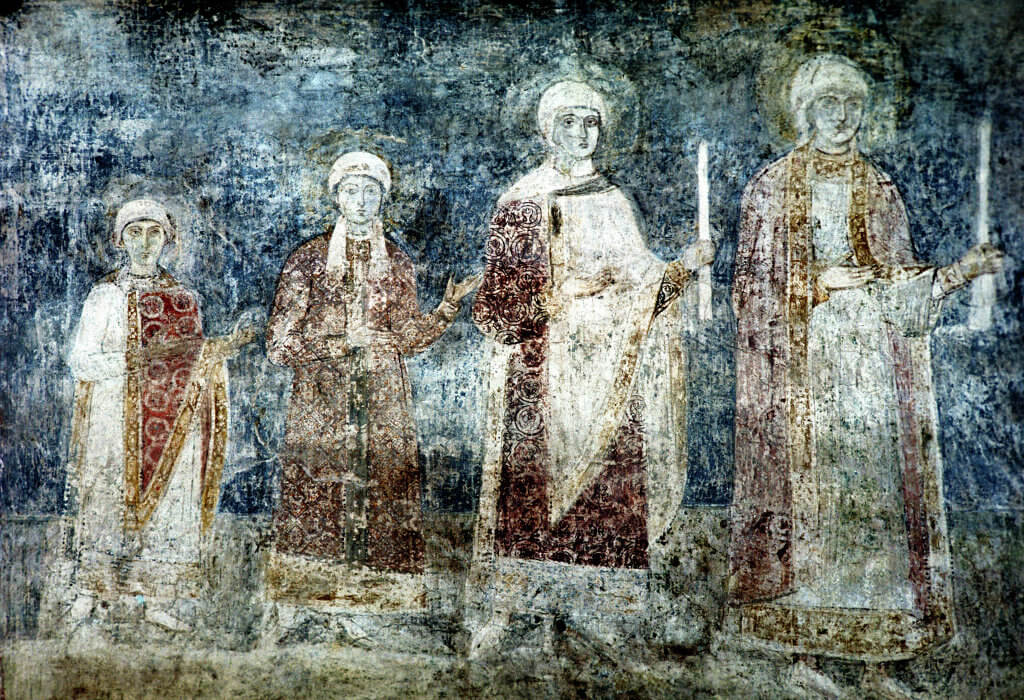
Inside Saint-Sophia Cathedral, a fresco depicting the Grand Prince’s family.
Image courtesy of: Daily Art Magazine
Among the most important is the golden-domed Saint-Sophia Cathedral and The Assumption Cathedral in Kharkiv. Saint-Sophia’s was built in the 11th-century by Prince Yaroslav the Wise. This religious relic was modeled after the Church of Hagia Sophia… the spiritual center of medieval Orthodoxy. For many years, the cathedral was a model for other churches in the area. The Kiev cathedral is home to many mosaics and frescoes… some of which are 1,000 years old. The monastic complex of Kyiv-Pechersk Lavra with the Church of the Saviour at Berestovo is related to Saint-Sophia. These two structures are UNESCO heritage sites.
Located in the historic center of Kyiv, the complex is important to all Ukrainian’s, not just those that practice the religion. Since the 11th-century, the church has been able to preserve its ancient interiors and its impressive collection of mosaics and frescoes. Thus far, the church has remained unharmed; but, similar to Kyiv’s other major shrines, sitting in an elevated location leaves it especially vulnerable.
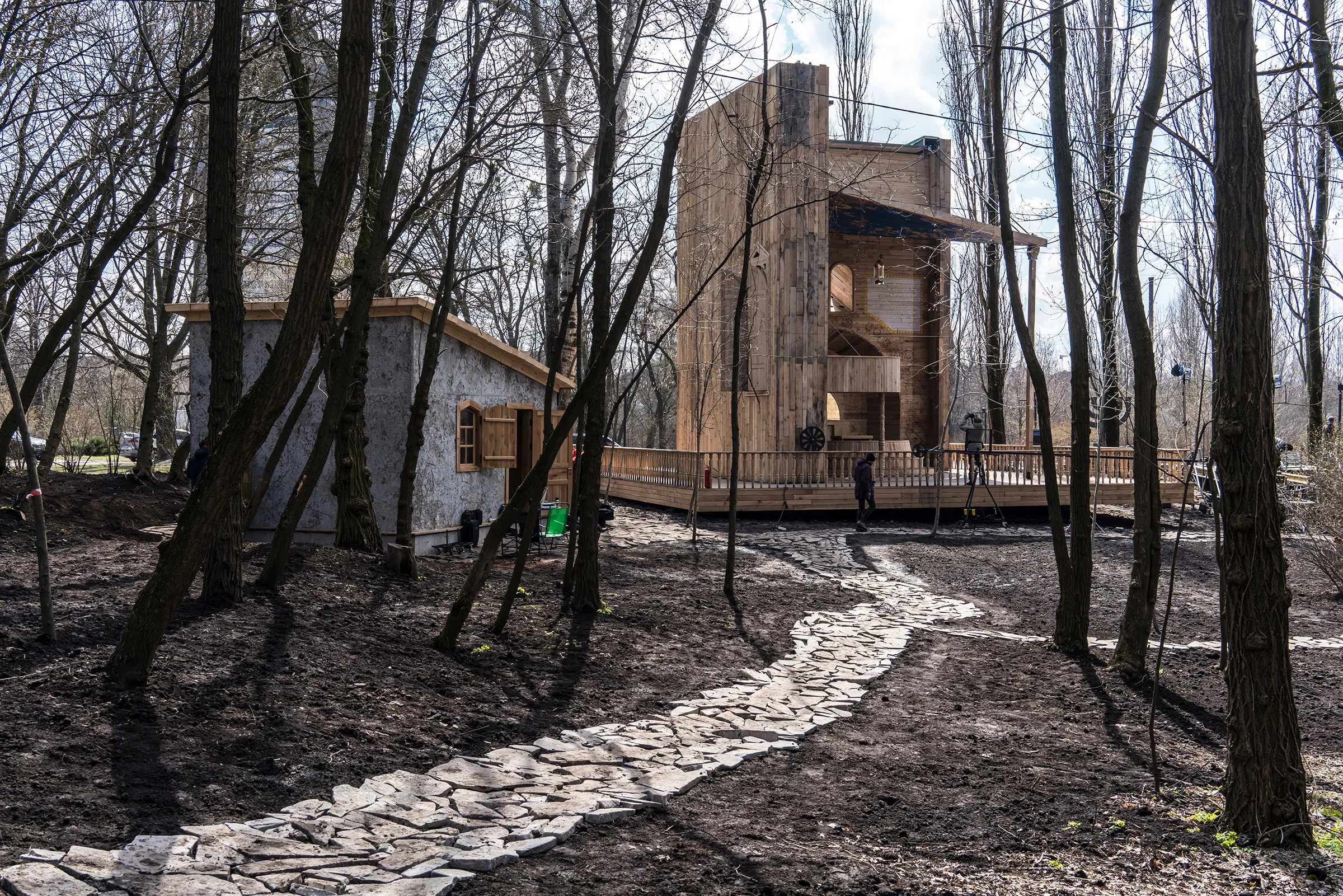
The new wooden synagogue at the Babi Yar Holocaust Memorial. The structure is meant to look like a book.
Image courtesy of: TIME, photographed by: Brendan Hoffman
A monument that has been damaged is Ukraine’s main Holocaust memorial, Babi Yar. This is the location where one of the worst mass killings during the Nazi occupation of Ukraine occurred. In 1941, more than 33,000 Jewish people were murdered there.
Last March, Russian forces bombed a nearby radio tower killing five people and damaging the memorial. Just last year, there was a ceremony for the new memorial that was built, it was attended by the Ukrainian President Voldymyr Zelenskyy. Following the bombing, the president said (courtesy of The Chicago Tribune), “What will be next if even Babi Yar (is hit)? What other ‘military’ objects, ‘NATO bases’ are threatening Russia? St. Sophia’s Cathedral, Lavra, Andrew’s Church?” As a sacred place, the bombing caused international outrage.
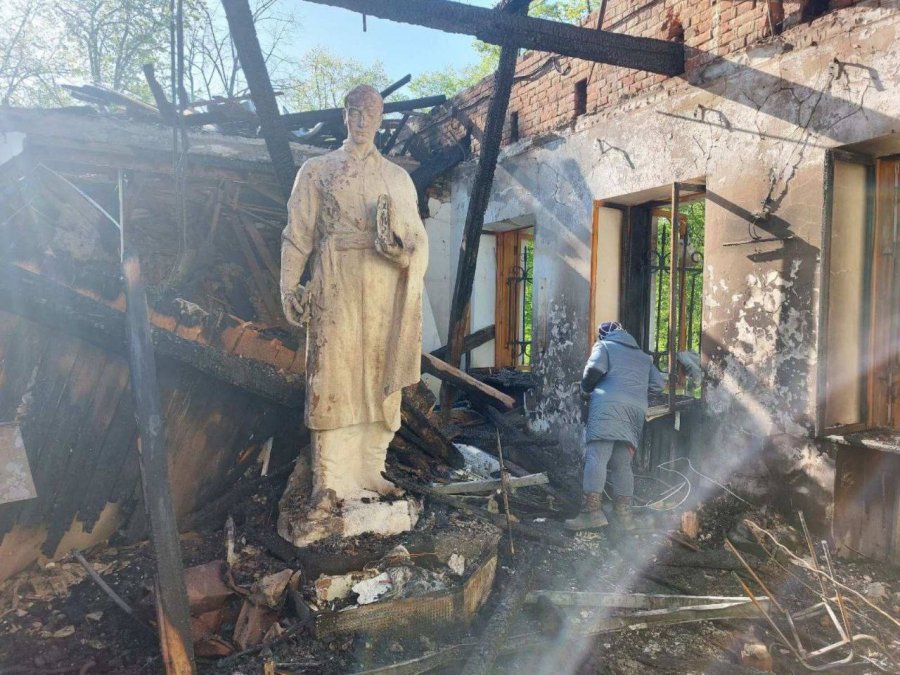
The National Skovoroda Museum was completely demolished in a May bombing.
Image courtesy of: KHPG
As of May 9th, UNESCO had verified damage to 127 landmarks in Ukraine, including 11 museums, 54 religious buildings, and 15 monuments. In addition, Ukrainian officials have alleged that Russian troops had looted more than 2,000 pieces of artwork from three cultural institutions in Mariupol.
Among the most egregious acts was the complete destruction of The Kuindzhi Art Museum in Mariupol. The museum was dedicated to the life and work of Archie Kuindzhi, an important Ukrainian realist painter. The museum’s 600 paintings by 20th-century Ukrainian artists are presumed destroyed. In Kharkiv, Ukraine’s second largest city, The Assumption Cathedral was damaged. Most notably, the church’s stained glass windows were destroyed. The hope that Russia will stick to military targets has longed ceased to exist. As Zelenskyy said (courtesy of The Violin Channel), “This is the price of freedom. This is terror against Ukraine. There were no military targets in the square – nor are they in those residential districts of Kharkiv which come under rocket artillery fire.”
